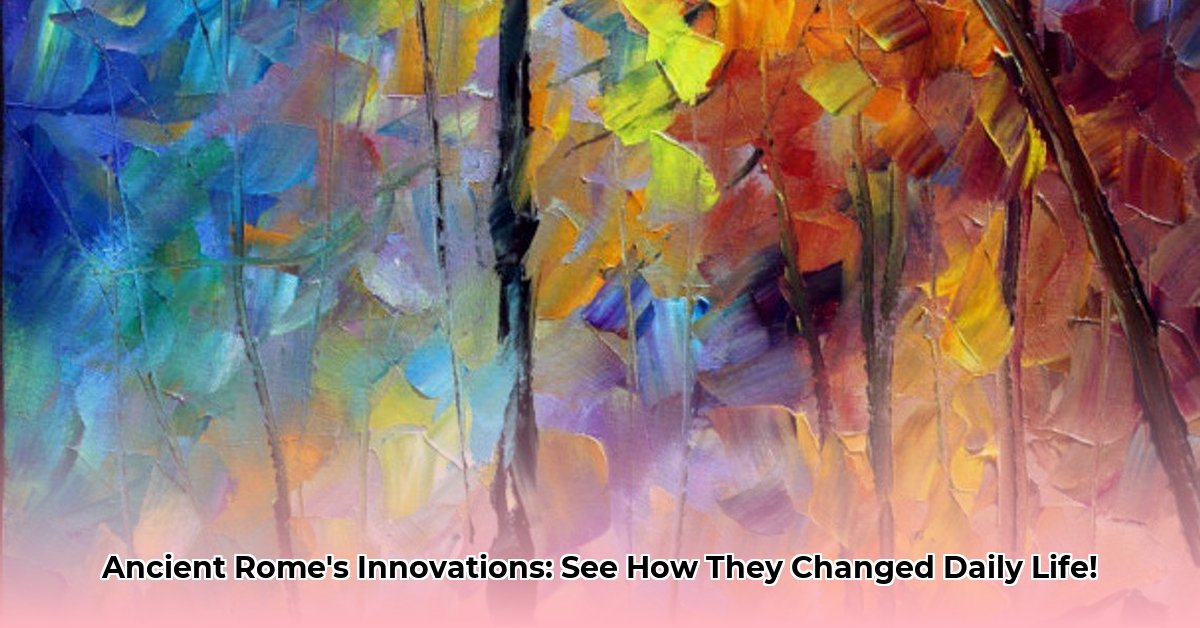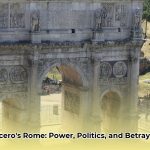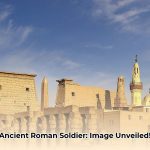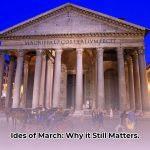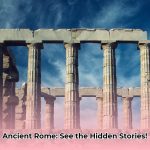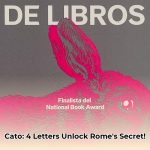Ever pondered what life was truly like in ancient Rome? Beyond the grand monuments and epic histories, the most vivid insights often spring from the art that adorned their daily lives. We are not merely talking about museum artifacts; imagine scenes bursting with color, narratives unfolding on the very walls of Roman homes, each brushstroke a window into an ancient existence. This journey delves into the unique world of paintings of ancient Rome—exploring their profound influences, ingenious innovations, and seamless integration into the rhythms of Roman society. Prepare to discover strikingly lifelike portraits, grasp how art became an inseparable part of Roman routines, and discern the distinctive qualities that set these remarkable artworks apart. You can learn more about the ancient Roman achievements here.
The Canvas of Daily Life: Roman Paintings and Their World
Roman art did not emerge in isolation. It was a vibrant synthesis, initially drawing significant inspiration from the Hellenistic Greeks, the innovative Etruscans, and even the sophisticated Egyptians. The compelling question arises: did Roman artists simply mimic these established styles, or did they truly forge a distinctive identity? Early Roman artworks, those predating 500 BCE, certainly exhibit clear Greek influences. However, as the Roman Empire expanded its vast embrace, its art began to absorb disparate styles from conquered territories. This gradual assimilation transformed initial imitations into something profoundly and uniquely Roman, a fascinating narrative of artistic evolution.
Art Woven Into the Everyday Fabric
One of the most compelling characteristics of Roman artistry lies in its pervasive presence. We are not speaking solely of grand statues in sacred temples or opulent paintings of ancient Rome adorning palaces. Art permeated the daily lives of countless Romans. Imagine walking across floors meticulously adorned with intricate mosaics, or residing in homes where walls were brought vibrantly to life by frescoes that narrated compelling stories. This integration showcased the practical application of aesthetics, elevating ordinary spaces into immersive visual experiences.
The House of Livia, a magnificent structure over 2,000 years old, serves as a prime example. Its preserved wall frescoes and elaborate floor mosaics meticulously capture the serene beauty of nature, transforming interior spaces into tranquil gardens. Similarly, the House of the Vettii in Pompeii offers an extraordinary visual feast, featuring intricate frescoes deeply inspired by Greek mythology. One particular chamber, known as the Ixion Room, dazzles with its detailed composition. These residences were far more than simple dwellings; they functioned as personal, immersive art galleries, illustrating how ancient Roman art filled every part of their lives.
Masters of Illusion: Roman Painting Styles and Techniques
Roman painting, particularly the frescoes unearthed from Pompeii and Herculaneum, showcases remarkable innovation beyond mere imitation. Roman artists developed sophisticated techniques and styles to create immersive, often illusionistic, environments within domestic and public spaces.
The Four Pompeian Styles: An Artistic Evolution
Archaeologists and art historians have categorized ancient Roman wall paintings of ancient Rome into “Four Pompeian Styles,” reflecting the chronological evolution of decorative trends:
- First Style (Incrustation Style): Dating from 200–80 BCE, this style emulated the appearance of costly marble slabs using painted stucco. Its primary aim was to create an illusion of luxury materials, reminiscent of Hellenistic palaces, without the actual expense.
- Second Style (Architectural/Illusionistic Style): Prevalent from 80 BCE–14 CE, this style broke through the wall surface with elaborate painted architectural vistas, landscapes, and mythological scenes. Artists employed linear perspective and atmospheric effects to create deep, convincing spatial illusions, making rooms feel larger and visually extending them into fantastical worlds. Examples include the famous garden frescoes from the Villa of Livia at Prima Porta, which create the illusion of an open-air pavilion.
- Third Style (Ornate/Ornimental Style): Popular from 14–60 CE, this marked a shift towards greater elegance and decorative refinement. Walls often featured large, monochromatic panels adorned with delicate, linear architectural elements, small, centralized figural vignettes, and intricate, slender motifs. While illusions were still present, they were more contained and less expansive, emphasizing flat surfaces and subtle details rather than grand vistas.
- Fourth Style (Intricate Style): Flourishing from 60–79 CE (until the eruption of Vesuvius), this style was a highly eclectic and complex fusion of the previous three. It combined architectural illusions, large mythological narratives, delicate ornamental motifs, and vibrant color schemes. Walls might feature framed mythological panels floating on central fields, surrounded by fantastic architectural elements and smaller, intricate details, demonstrating a playful and often theatrical approach to decoration. The House of the Vettii is a prime example, showcasing the intricate interplay of these elements.
Fresco and Encaustic: Enduring Techniques
The durability of many Roman wall paintings of ancient Rome is largely due to the buon fresco technique. Artists applied pigments to wet plaster, which then absorbed the color as it dried, creating a permanent bond. This method allowed for vibrant, long-lasting murals that became an integral part of the architectural structure. While buon fresco was dominant, fresco secco (painting on dry plaster) was also used for adding details, though it was less durable.
For portable portraits, particularly prevalent in Roman Egypt, the encaustic technique was favored. This involved mixing pigments with heated beeswax and applying them to wooden panels. This method produced rich, luminous colors and allowed for remarkable detail and a lifelike quality, as seen in the Fayum mummy portraits. These striking individual likenesses offer unparalleled insights into Roman fashion, hairstyles, and personal appearance.
Realism and Thematic Breadth
Roman painters, much like their sculptors, displayed a distinct inclination towards realism. This was evident not only in portraiture but also in their diverse thematic choices. Unlike Greek art, which often focused on idealized mythological narratives or heroic deeds, Roman paintings of ancient Rome embraced a wider range of subjects:
- Landscapes: Roman art saw the significant development of landscape painting as a distinct genre, often depicting idyllic rural scenes, villas, and gardens. These scenes frequently incorporated elements of mathematical perspective, showcasing an understanding of depth.
- Still Lifes: Depictions of everyday objects, food, and household items became popular, reflecting the Romans’ appreciation for the mundane beauty of their surroundings.
- Genre Scenes: Paintings captured candid moments of daily life, from market scenes to domestic activities, providing invaluable ethnographic detail.
- Mythological Narratives: While realism was central, mythological tales remained a popular subject, often adorning walls with dramatic and engaging storytelling, albeit with a Roman sensibility.
Narratives in Pigment: Imperial Power and Enduring Themes
Roman rulers keenly understood the immense power of visual communication. While monumental sculpture and architecture were primary vehicles, paintings of ancient Rome also played a significant role in projecting imperial messages and documenting history. Large-scale murals and painted reliefs often adorned public buildings, triumphal arches, and basilicas, visually asserting Roman dominance and celebrating military victories. These artworks served as powerful reminders of the emperor’s authority and the empire’s achievements.
Beyond official propaganda, Roman art also profoundly shaped the themes and artistic approaches that would resonate for centuries. Later artists, particularly during the Renaissance and Baroque periods, drew heavily on Roman mythological themes and classical forms. The themes of love, war, and the human condition, often depicted in ancient Roman mythological art, found new expression in the works of masters such as Sandro Botticelli (Mars and Venus), Andrea Mantegna (Parnassus), Raphael (The Wedding Banquet of Cupid and Psyche), Caravaggio (Amor Vincit Omnia), Peter Paul Rubens (The Feast of Venus), Francisco Goya (Saturn Devouring His Son), and Jacques-Louis David (Mars Being Disarmed by Venus). These later interpretations, while not ancient Roman paintings themselves, demonstrate the enduring resonance and universal appeal of the narratives deeply rooted in Roman culture and art.
Pompeii and Herculaneum: A Preserved Palette
The catastrophic eruption of Mount Vesuvius in 79 CE, while a profound disaster, inadvertently preserved an extraordinary wealth of Roman artwork and artifacts within the buried cities of Pompeii and Herculaneum. The suffocating ash and debris that engulfed these urban centers effectively acted as a remarkable time capsule, safeguarding fragile wall paintings of ancient Rome, delicate frescoes, and robust mosaics.
These invaluable remnants offer unparalleled insights into Roman daily life, deeply held beliefs, and evolving artistic styles. The Villa of Mysteries, for example, features a room completely covered in evocative frescoes depicting mysterious initiation rituals, providing us with a rare glimpse into the complex religious practices of the era. The remarkable preservation of these delicate artworks, despite the volcanic cataclysm, provides a visual lexicon of a bygone age, allowing modern scholars to study Roman painting in an unprecedented context.
The Enduring Pigments: Roman Painting’s Legacy
The impact of Roman painting on the trajectory of Western art is undeniable and profound. Its distinct emphasis on illusionism, realistic portraiture, the development of landscape and still life as genres, and the innovative integration of art into daily environments has profoundly influenced countless artists and artistic movements throughout recorded history. From the intellectual fervor of the Renaissance, which drew direct inspiration from classical antiquity, to the disciplined elegance of Neoclassicism, Roman art has consistently served as both a foundational source of inspiration and a benchmark of artistic excellence.
Even today, the vibrant frescoes and detailed portraits of ancient Rome continue to captivate and inspire, drawing millions of visitors annually to museums and active archaeological sites across the globe. They stand as an enduring testament to Rome’s unparalleled and persistent legacy, reminding us of the timeless power of art to reflect, shape, and transcend human experience.
Preserving a Timeless Artistic Heritage
To ensure that this incredibly rich artistic heritage continues to inspire and inform future generations, ongoing efforts are crucial:
- Further Research Initiatives: Deeper exploration into the nuanced regional variations in Roman painting and the fascinating assimilation of local traditions is vital.
- Comprehensive Digital Archives: Creating extensive and accessible digital archives, including high-resolution images and 3D models of Roman frescoes, provides a more immersive and globally accessible experience, safeguarding these fragile artworks for posterity.
- Engaging Exhibitions: Museums continually design and curate dynamic exhibits that highlight the intricate dialogue between Roman painting and its influences, emphasizing Roman adaptation and pivotal innovations.
- Targeted Educational Initiatives: Systematically integrating Roman art into school curricula, with a strong emphasis on its critical historical context and pervasive influence, cultivates deeper appreciation among younger audiences.
Understanding Roman painting is not merely about appreciating ancient artifacts; it is about attaining a far deeper comprehension of Roman society, politics, and culture. It enables us to perceive the world through their eyes and to fully appreciate the profound and lasting legacy they bequeathed. It vividly demonstrates how something conceived ages ago can still powerfully inspire and significantly influence today’s contemporary world.
Further Reading:
To delve deeper into the fascinating world of Roman mosaics (a closely related art form), explore insightful perspectives offered by “The Secret to the Success of Roman Mosaics as “Souvenirs” of Antiquity.”
Reference:
“The Secret to the Success of Roman Mosaics as “Souvenirs” of Antiquity.” Made of Rome, madeofrome.com/how-was-it-made/the-secret-to-the-success-of-roman-mosaics-as-souvenirs-of-antiquity/. Accessed 27 Oct. 2023.
